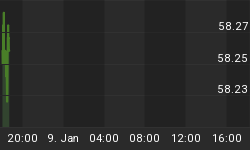We constantly hear from the talking heads that the Fed's recent policy actions are creating mammoth amounts of financial liquidity. But have these talking heads bothered to look at the data? If they did, they would have to change their tune.
Let's start with the raw material of financial liquidity created by the Fed - the size of its balance sheet. Chart 1 shows that the year-over-year growth in the total assets of the Federal Reserve System was up 3.85% in the week ended June 18. Although total asset growth has rebounded from slightly negative territory of late April, the latest 3.85% growth still is low in comparison with recent years' behavior. So, the Fed is not creating massive amounts of credit on its own. In yesterday's comment, I noted that the Fed had reduced its holdings of U.S. Treasury securities by billions of dollars in the past six months. In effect, the Fed has been "sterilizing" much of the credit it has been creating via the discount window and its new borrowing facilities.
Chart 1
Now, let's take a look at what commercial banks have been doing with their loans and investments. Chart 2 shows that in the 13 weeks ended June 4, loans and investments at all commercial banks were contracting at an annual rate of 2.25%. It is true that bank credit growth ballooned in 2007 as banks were forced to take on credit that had originally been financed in the commercial paper market. But we seem to be over that "hump."
Chart 2
If bank assets are contracting, then banks' funding needs would be diminished. And if banks' funding needs were reduced, we would expect that banks' deposit growth would be slowing. Do the facts fit our hypothesis? You betcha. Chart 3 shows that after growing at annual rates in excess of 16% in the second half of 2007 and in early 2008, growth in deposits at commercial banks has slowed to only 3.02% in the 13 weeks ended June 4.
Chart 3
Similar to bank credit and deposit growth, M2 money supply growth accelerated recently. But, also similar to bank credit and deposit growth, M2 growth has sharply decelerated, both with and without retail money funds. Chart 4 shows that in the 13 weeks ended June 9, growth in M2 was only 2.99% and growth in M2 excluding retail money funds was only 3.12%.
Chart 4
In general, there has been a sharp deceleration in the growth of private nonfinancial debt. Chart 5 shows the growth behavior in the sum of household and nonfinancial business debt. After growing at annual rates in excess of 10% in each of the four quarters ended Q2:2006, private-sector nonfinancial debt growth has slowed to only 6% in Q1:2008.
Chart 5
















